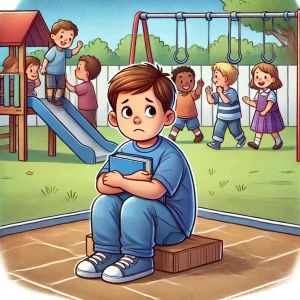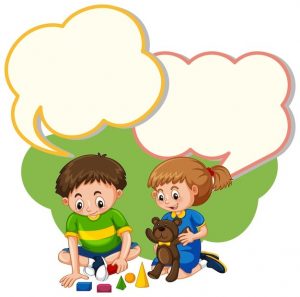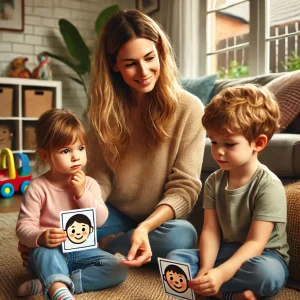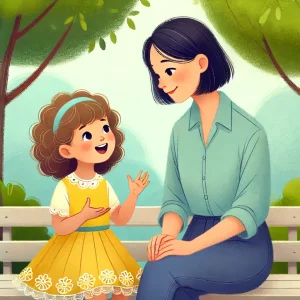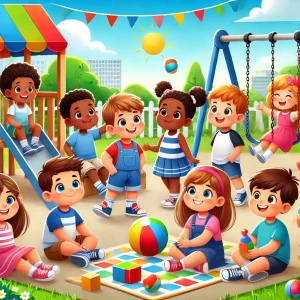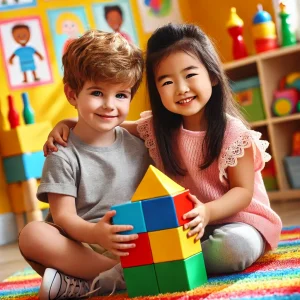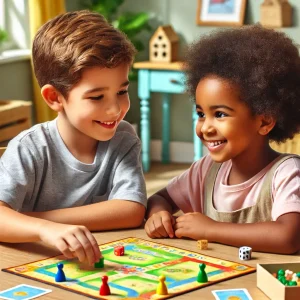Why Social Stories Work for Children with Autism and ADHD
Last Updated: January 9, 2025
Social Stories for Autism and ADHD are tailored narratives designed to help children with Autism and ADHD grasp social cues and appropriate behaviors. These stories simplify complex interactions, making them accessible and engaging for children who find social norms challenging.
The Role of Social Stories in Special Education
In special education, social stories are crucial. They provide clear examples of expected behaviors, helping children with Autism and ADHD navigate daily social interactions more confidently and effectively. This method not only enhances understanding but also fosters a smoother adaptation to routine social situations.
Benefits of Social Stories for Autism
Building Communication Skills
Social stories simplify social interactions for children with autism, helping them understand and use language better. These stories show real-life situations, like conversations and play, in an easy way, helping kids learn how to express themselves and respond to others. This helps them talk better and feel more confident when they are with other people.
Fostering Social Understanding
Social stories are really helpful for kids with autism to get the hang of social rules. They provide step-by-step examples of how to behave in social settings, like how to share or take turns. This practice helps children grasp what to do and when, making it easier for them to make friends and fit in. With stories tailored to each child’s needs, they can improve not just in understanding others but also in being part of the group.
Advantages of Social Stories for ADHD
Enhancing Focus and Attention
- Capturing Interest: Social stories grab the attention of children with ADHD through engaging and relevant scenarios.
- Maintaining Focus: These stories keep children focused on one scenario at a time, helping them learn to apply this focus in other areas of life.
- Improving Concentration: Regularly using social stories can teach children with ADHD to maintain their concentration for longer periods.
Promoting Behavioral Expectations
- Modeling Positive Behavior: Social stories illustrate positive behaviors in different settings, showing children how to act.
- Understanding Social Cues: These stories help children see the benefits of positive behavior through clear examples.
- Building Good Habits: Over time, social stories can help children with ADHD develop better behavior patterns and social skills.
Crafting Engaging Social Stories
Elements of Effective Social Stories
Creating social stories that resonate and have a positive impact involves a few key elements. Here’s what makes a social story effective:
- Clear and Concise Language: Use simple, direct language that the child can easily understand. Avoid metaphors or abstract concepts that might confuse them.
- Detailed Descriptions: Include specific details about where and when the story takes place, who is involved, and what they are doing. This helps the child visualize and comprehend the scenario better.
- First or Third Person Narrative: Depending on the child’s preference, write the story from a first-person perspective to help them relate directly, or use third-person to give them an observer’s view.
- Positive Reinforcement: Focus on positive outcomes and behaviors. Highlight the benefits of following the guidelines laid out in the story.
- Visual Supports: Incorporate pictures or illustrations that align with the text to aid understanding, especially for visual learners.
Guidelines for Developing Social Stories
For parents and educators looking to craft their own social stories, here are some practical tips to get started:
- Identify the Purpose: Start by determining what behavior or social skill you want to address. This focus will guide the story’s development.
- Engage the Child: Involve the child in the story creation process if possible. Ask them what characters or elements they would like to see, making the story more appealing to them.
- Keep it Structured: Structure the story with a clear beginning, middle, and end. Make sure each part serves the purpose of the story, leading to a logical conclusion.
- Review and Revise: After writing the story, review it to ensure it’s understandable and meets the child’s needs. Test it with the child and be open to making revisions based on their feedback.
- Consistent Use: Integrate the story into the child’s routine regularly to reinforce the behavior or skill being taught.
WellnessHub’s Role in Supporting Social Stories
Our Services and Support for Autism and ADHD
At WellnessHub, we focus on enhancing therapy for children with Autism and ADHD by providing innovative tools and resources. We collaborate with specialists, educators, and parents to offer practical and effective solutions that make learning easier for these children, especially through the use of social stories. Visit our Resources page to explore these tools and learn more about how WellnessHub supports effective learning and development through social stories.
Conclusion
Social stories are a proven way to help children with Autism and ADHD improve their social skills and behavior. By breaking down complex interactions into simple steps, these tools enhance understanding and boost confidence. Explore our range of resources at WellnessHub, tailored specifically for children with learning and behavioral challenges. From engaging apps to practical workshops, we have everything you need to support your child’s development.
Frequently Asked Questions:
1. What are social stories?
Social stories are short, written or visual narratives designed to explain social situations, behaviors, or skills by describing them through relevant scenarios. They are tailored to help children understand and navigate social nuances that they find challenging.
2. How do social stories help children with autism?
Social stories help children with autism by explicitly breaking down the social cues, expected behaviors, and reactions in various situations. This aids in reducing anxiety about unpredictable interactions and enhances their ability to communicate and interact with others.
3. Can social stories improve attention in children with ADHD?
Yes, social stories can significantly improve attention in children with ADHD by providing clear, structured stories that capture their interest. These stories simplify complex situations, allowing children to focus better and understand social expectations clearly.
4. What age is appropriate for using social stories?
Social stories can be used effectively for children as young as three years old and continue to be beneficial through the teenage years. The key is to tailor the complexity of the story to the age and understanding of the child.
5. How often should a child be exposed to social stories?
Ideally, children should be exposed to social stories frequently, especially before encountering situations depicted in the stories. Regular exposure helps reinforce the behaviors and norms described, making the lessons more effective.
6. Where can I find resources for creating social stories?
Resources for creating social stories can be found on various educational websites, in special education books, or through platforms like mywellnesshub, which offers templates and guides specifically designed for social story creation.
7. Are there digital apps for social stories?
Several digital apps are available that offer interactive and customizable social stories. These apps often include features like text-to-speech and interactive elements to engage children more effectively.
8. What should be included in a social story?
A good social story should include a specific social situation, clearly defined characters, perspectives, and cues, the expected behaviors, and the positive outcome of following the behaviors. It’s important to use positive and affirming language throughout.
9. Can social stories be used at school?
Absolutely, social stories are highly beneficial in school settings where they can help children understand classroom rules, social expectations, and the routines of school life, thereby improving their engagement and behavior.
10. How do I tailor a social story to my child’s needs?
To tailor a social story to your child’s needs, start by clearly identifying the specific challenge or social skill to address. Use language that your child understands, incorporate their interests to make the story engaging, and always include visual aids that relate to the content of the story. Review and revise the story based on your child’s feedback to ensure it meets their needs.
About the Author:
Shravanaveena Gajula
M.Sc ., Speech and Language Pathology (5+ years of experience)
Shravanaveena Gajula is a dedicated Audiologist and Speech-Language Pathologist with a BASLP and an M.Sc in Speech and Language Pathology. With experience spanning multiple settings, including Wellness Hub and Ashray Akruti, Veena specializes in a wide range of disorders from developmental issues in children to speech and language assessments in adults. Her expertise includes parent counseling, managing speech sound and fluency disorders, and creating individualized therapy programs. Veena is also PROMPT certified and an author of several insightful blogs on speech and language pathology, aiming to educate and assist caregivers in supporting their loved ones.
Book your Free Consultation Today
Parent/Caregiver Info:
Client’s Details:
* Error Message
